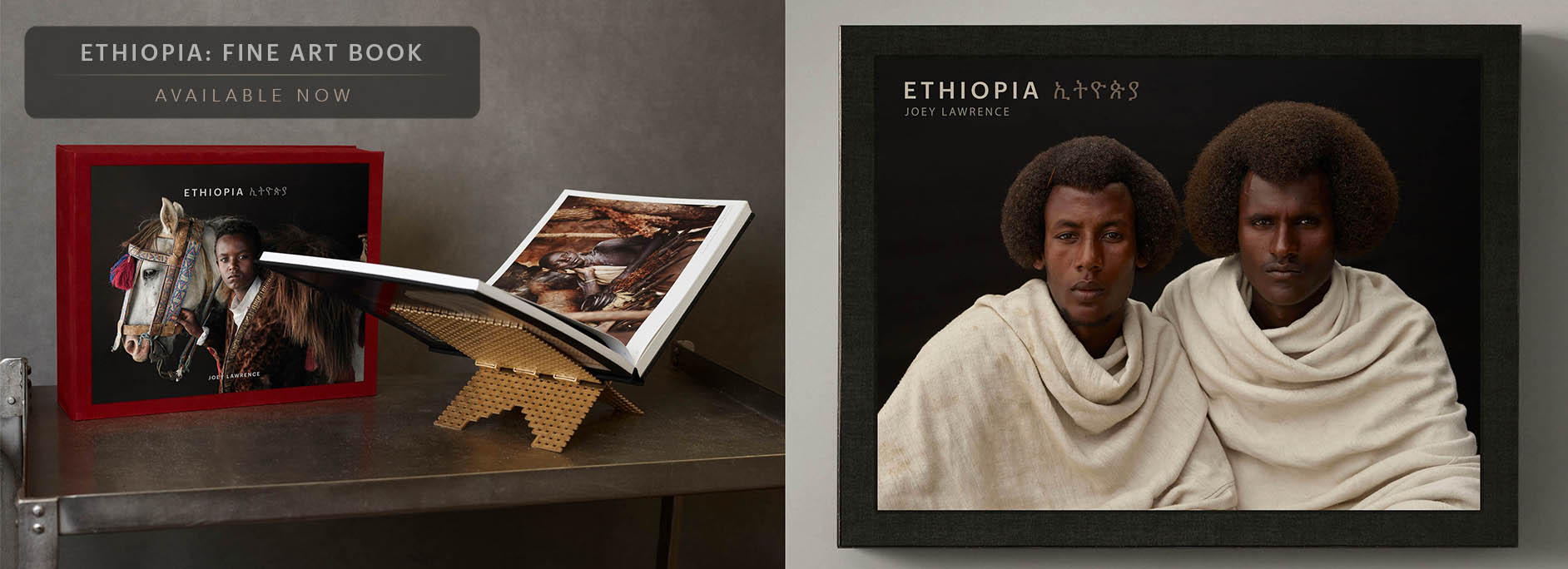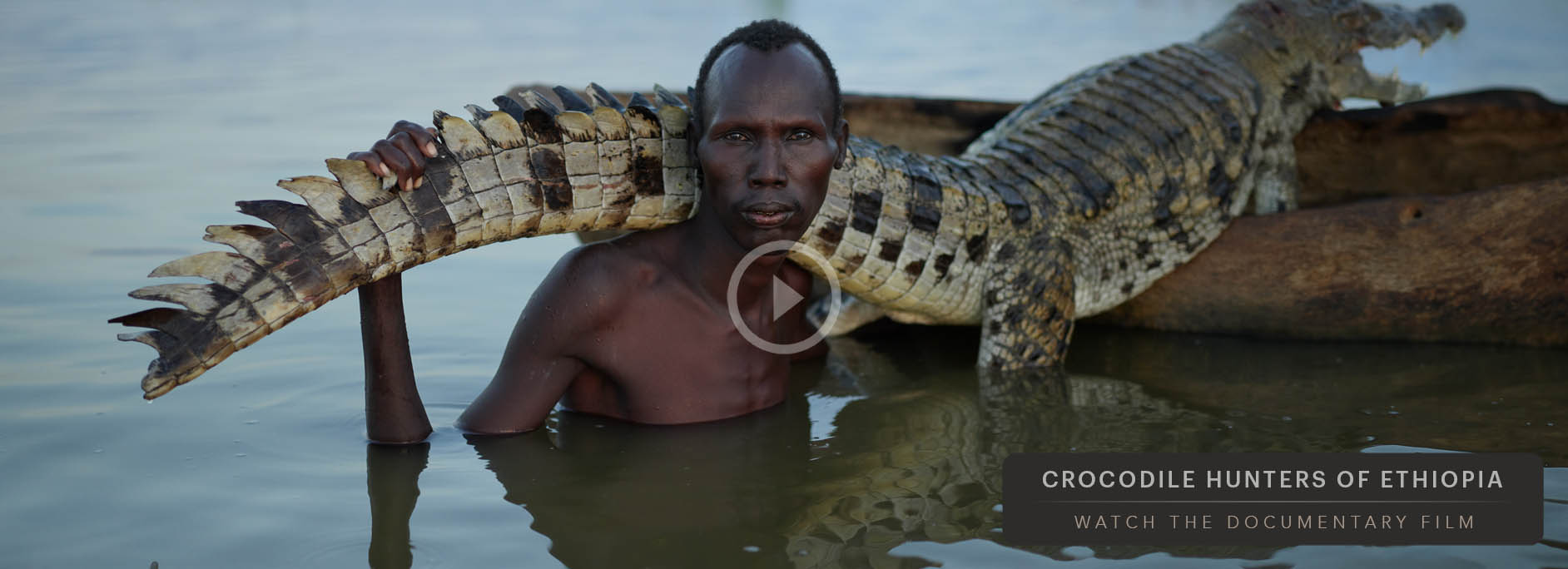In a remote village in Southern Ethiopia, these naked men showing off their bellies are actually rivals in an annual competition. They have spent the year transforming their bodies into incredible shapes. This is a beauty pageant where all the contestants dream to be the fattest. The body that is desired most is big, but also a rare combination of fat, firm and thick. No where else in the world can you see this— the Kael Ceremony practiced by the Me’en tribe. But hardly anyone calls the tribe by their original name anymore. Over a generation, the men here have proven themselves to be the biggest bodies in the Omo Valley, and have been nicknamed by their neighbors as “the Bodi.” But the Me’en have embraced the nickname, and celebrate such bodies in their culture in a way that nobody else does.
For centuries, Ethiopia’s Omo Valley has been a crossroads for many distinct tribes. These diverse ethnic groups have lived in this region long before the modern nation state called Ethiopia existed, and many still live the legends of their ancestors. For more than a decade, the Bodi Me’en have always warmly welcomed me to photograph them, but I’m happy to say that they don’t really give a damn what outsiders think about their perception of beauty. This is the way their forefathers did it, and this is how they still do it today.
Kael competitors sporadically dance around the village, then take long breaks to sit down, rest, and consume more milk and yogurt.
Gontidi chugging fresh milk.
The Kael celebrates the vitality of grazing land during the rainy season. In the Omo Valley, cows equal money, and having a big body is a sign of prosperity. Consuming only milk, butter and blood from livestock can show off individual wealth. A big body can also prove your personal connections. Some of these young men don’t yet have their own cattle. Their family, friends and patrons have backed them, donating their milk to the competitor. Big bellies represent this network of support, which is vital in an ever-changing landscape.
Becoming big out here requires discipline. The Bodi Me’en say that typically it is not the richest who wins, but the most mentally dedicated. They must follow a strict and regimented diet. This is the main reason why these Kael competitors are respected amongst the tribe. Above all else, participating in the competition is a way to attract potential wives. Men here believe that the bigger they are, the more women will desire them.
LAVAZZA
Every year, Lavazza collaborates with photographers and other artists to produce a fine art calendar. I had that honor back in 2016. This year, because of the lockdowns and quarantines, many of the past photographers each contributed an image that was shot from their own place. I was honored to be called upon once again, this time finding my name next to legends of art and photography like Patti Smith, Steve McCurry, Martin Schoeller and David Lachapelle, just to name a few. For my contribution to the 2021 Lavazza Calendar, I wanted to find a positive view. I was asked by Lavazza to envision a world post COVID-19, so I looked at what was already happening around me in Ethiopia. I like the Bodi Me’en tribe’s concept of being self-sufficient, owning your own livestock, and that is how you show off your wealth. They don’t need to rely on much beyond their own tribe.
Ethiopia is like my second home and I’ve been dedicating a lot of time recently to photography projects that will eventually make up my next fine art book. When the other countries around closed their borders one by one, I knew I made the right decision to stay. This virus stunned the world, but Ethiopia knows how to handle dangerous viruses. From tuberculosis, to Ebola, when there is a threat- the people believe it, and take action.
A behind the scenes documentary about our trip to photograph the Kael competitors.
At the beginning of the outbreak, I remained isolated in my home here. At first, international travelers coming in had to be mandatory quarantine, regional borders were sealed, and there was a sense of paranoia in the air. As things started to open up, I began to check see how feasible it was to continue my work. I learned that if my friends here and I received negative COVID-19 PCR (swab test) results, we could receive special certificates to travel from the government, so long as we quarantined for 2 weeks before entering each region we visited, and we followed the same safety rules as everyone else. After a lot of bureaucratic processes, we got every single permission. Beyond all this, it seemed that people were happy travelers were coming back after months of devastation to that industry here. Once we were finished, I got another COVID-19 swab test to remain confident.
In the main photo that Lavazza, their advertising agency Armando Testa and I chose for the calendar, you’ll see young men gathered together measuring their waists with a rope. Gontele has the biggest belly this year, but he’s not declared the winner. After much pinching and grabbing, the main judge and speaker Mualony comes to a consensus with the group, and they choose another: Bocha. The decision is based on more subtle characteristics- his body is big, but it’s so firm that it feels like a rock. Bocha admits some last minute chugging of milk helped him. There’s no big announcement, but everyone will know. Elders will respect Bocha. Neighbors will gossip. Women will talk amongst themselves.
A big and beautiful 30x40 inch print of this image, as well as the calendar itself, is now available as part of a charity auction to benefit Save the Children.
“When we measure each other, some of the competitors have a huge belly. But others have a very firm belly. When you’re building your body, it must be big but also firm to win. If our body parts are jiggling, we don't see it as legitimately fat. We actually prefer bloated and firm, not shaking. The winner will actually be decided from the most bloated belly and firmest bum.” - Luchguna, past Kael competitor
This year, the typically huge Kael festival was small. It was not celebrated in Hana, a large settlement of Bodi Me’en and Mursi people. This was due to COVID-19, but also because one of the head Bodi Me’en chiefs passed away (unrelated to the virus.) Only smaller gatherings, such as this one in a tiny village held a competition. As a photographer, this gave me a very intimate view of some of the more subtle aspects of the Kael which are often masked by the large gatherings and parade-like festivities.
Perhaps next year, the Bodi Me’en will also be able to celebrate in the way they used to.
“The elders are looking at us, they can see us. They line us up. The groupings are based on fatness. The skinny ones who were not committed, they will be together. The biggest competitor, it's clear he was eating a lot of food, and his body has exploded!” - Gontidi, Kael competitor.
Biwole Habiza, daughter of a Bodi Me'en feudal lord, rests inside her home.
I’ve known some of these Bodi Me’en guys for 12 years, (Shinine Koroymut is one of the little kids sitting in my “Procession Under Tuma” panorama), but a lot of the closeness I’ve had in the past just wasn’t possible. These people want to put their arm around you, joke with you, and look at photos together each day. I’m a photographer that likes to live among the people, but having to be separate and wear a mask was kind of a nightmare, but the only way I could do it this time around.
Before COVID-19, I was traveling non-stop photographing personal fine art and commercial project for brands, airlines, tech companies, etc. I never took my lifestyle for granted, but this pattern of endless work and travel became so normalized for me that I lost sense of what it would feel like if it suddenly disappeared. Then it did disappear. When all commercial work shut down, and nobody was working, I realized I was still in love with photography. I returned to my passion projects- my personal work. What I shot for Lavazza was simply personal work. And as soon as the restrictions started to lift, I entered the world again with a new reborn passion and energy.
Where I was born, we often make the mistake of reducing Ethiopia to visuals the famine of the 1980s, and that mentality has to be updated to show what this land can offer the next generation. There’s a lot of wealth here, even if it is not measured in paper money. The Bodi Me’en measured their wealth through their own livestock, through the family or friends who wanted to be their patrons for the competition. When the crisis happened, the world economy tanked, the stock market crashed. It was the Bodi Me’en who proved they were truly rich.
JL
Oypocha (left) and Gontidi (right), winners of this year's scaled-down Kael competition.
I would like to thank the following people for helping to bring this project to life:
Ethiopia: The Bodi Me’en of the Southern Nations, Nationalities and People’s Region, Endegena Desalegn and colleagues at the Ethiopia Ministry of Culture and Tourism, Jinka Tourism Office, Ethiopian Public Health Institute
Photo Team: Nibret Adem and the Hamerland Tours team, Kiya Tadele, Nebiyu Bekele, Zabi Zunku Basha, Messay Seyfu
Lavazza Calendar 2021: Francesca and Giuseppe Lavazza, Luigino Finelli, Armando Testa Italy, the Box Films
Sudest 57: Giuseppe Ceroni, Biba Giacchetti, Eliana Izzo
Behind the scenes filmmaking and post-production: Aman Belachew Solomon at Lovision, James Poirier at Lazers Lab, Ryan Cleary at Luminosity Retouching


ADD A COMMENT (0)
Your comment has been posted